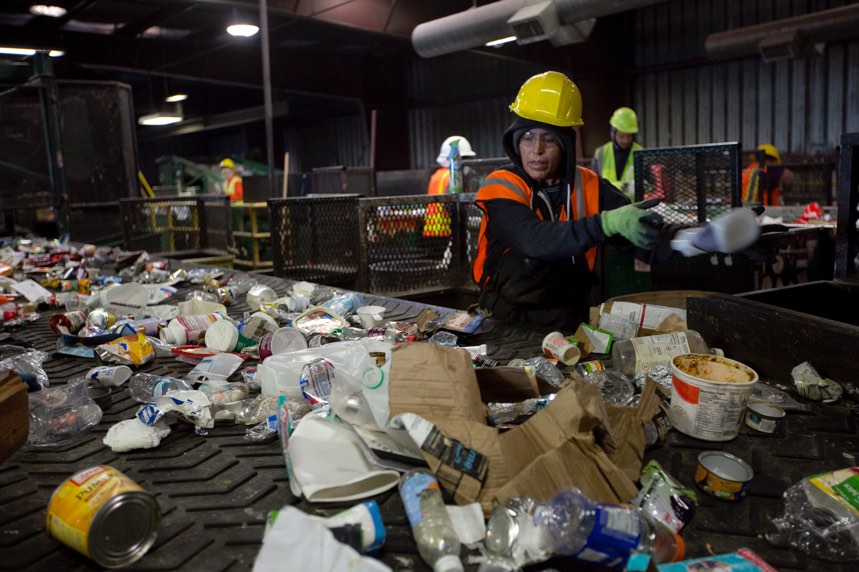The Challenge Our Current System Faces

Natalie Behring/Getty Images
Recycling has been a success in America, and cities have been at the center of efforts to improve sustainable waste management. Since the 1960s, recycling programs picked up steam, participation grew and thriving international markets developed for key recyclable commodities. Many local governments were able to fund their own programs through the sale of the materials collected.
Now, we need to rethink recycling as a country, and continue to progress to a zero-waste system.
Why? There are many challenges in the current system that can hinder progress toward zero-waste.
Recycling Programs Are Not Universal
Recycling is the most common way to divert waste, but it doesn’t help as many people as it could. Although 94% of US residents have access to some type of recycling services, 73% of residents have curbside recycling, while 21% only have access to drop-off programs.
Some cities have limited or no curbside recycling pickup, while others have very robust systems that even include curbside food waste/compost pickup – based largely on the regional market availability, financing and scale.
Other programs are even less common in cities, like composting programs, yard trimming services, food waste laws, electronics collection and recyclable glass or plastic container programs.
Lack of Consistency in Policy
Residential or commercial? Multifamily or single family? Landlord or lessee? There is inconsistency in all of these situations in many cities.
The private sector has difficulty adapting between separate markets based on system differences. For example, a large company with multiple office, retail and manufacturing locations must adapt internal policies and methods to suit each location.
Inconsistencies in Streams
There are inconsistencies in recycling streams across the country – single vs. multi stream, what is accepted in the streams and how to divide items in different streams. These inconsistencies also lead to disagreements about who should be responsible for the separation of recyclables – source-separated puts the burden on residents, businesses and government/haulers, while single stream puts the burden on processors. Inconsistencies between government and private sectors when establishing recycled commodities creates costly processing burdens for items such as plastic bags and film.
Difficulty in Maintaining Clean Streams At All Levels
Manufacturers and producers do not design for reuse and recyclability, and haulers are often not empowered by government and ordinances to manage contamination through tagging and ticketing, etc. Processors often lack the means to invest in better equipment, technology and equipment upgrades, leveraging tax incentives for capital improvement, and processors are often not incentivized economically to encourage recycling and organics over landfilling.
Who Pays for Recycling?
The inconsistencies of program financing and customer fees can also limit recycling programs. Some programs are financed through enterprise funds, others general funds and still others by allocated funds. Programs with customer fees are also inconsistent and structures range from Pay-As-You-Throw, to bundled trash and recycling fees, to free curbsite collection. These fee structures give customers the false impression that recycling is free, and with constant fluctuations of recycled product sales, it is difficult to calculate stable rates to charge customers.
China Will Stop Importing
China, the world’s largest buyer of recyclable goods, has announced a new policy restricting imports. The move has unsettled global recycling, creating an oversupply of several key commodities that threaten all processors, not just the ones that depended on exports. Without the money from overseas buyers, local governments across the country are rethinking their recycling programs.